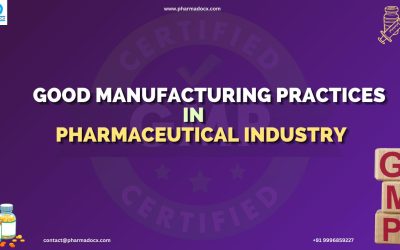PURPOSE: To lay down the procedure and methods for self inspection of practiced procedures in
order to monitor the implementation and compliance with good manufacturing practice principles
and to propose necessary corrective measures.
RESPONSIBILITY : 1.The Quality Assurance Officer.
2.The General Manager (Plant).
PROCEDURE: 1. Constitute a self-inspection team comprising a member each from production, in-process quality assurance, maintenance and house keeping departments.
- Nominate a team leader of constituted self-inspection team.
- Workout a self-inspection schedules with at least one inspection in 6 month.
- Conduct the self-inspection in accordance with prescribed format.
- Indicate all observations, deficiencies in self-inspection report and where applicable proposals for corrective measures.
- Get signed the self-inspection report by each member of team.
- Prepare an action plan on proposed corrective measures and fix responsibilities for taking action. Prescribe time frame for completion of action.
- Submit the copy of self-inspection report and action plant to general Manager (Plant). Distribute the copies each to concerned department.
- Remove deficiencies and take suitable measures to solve identified problems.
- Obtain a compliance report on implementation of action plant and removal of deficiencies, from concerned department.
- Review the compliance report.
- Carry out the self-inspection at intervals following a pre-arranged program and audit the compliance.
SELF-INSPECTION CHECKLIST
- Quality Assurance Organization and Responsibility.
- Specifications.
- Standard Operating Procedure.
- Label Approval/Reconciliation.
- Insect and Rodent Control.
- Employee Training.
- Deviation Procedures.
- Laboratory Equipment Calibration.
- Stability Studies.
10. Control Samples
- Qualification of Supplier, Vendors.
- Product Complaints.
- Product Trace ability.
- Process Water Treatment.
- Manufacturing Equipment Calibration/Maintenance.
- Equipment Control.
- Reprocess Control.
- Employee Facilities (Toilet, Uniform etc.).
- Segregated Area.
- Storage of Materials.
- FIFO (First In First Out Principle).
- Returned Goods/Recalls/Withdrawals.
- In-process Control.
- Reconciliation of Yields.
- Process Validation.
- Documentation as per schedules ‘U’.
- Cross Contamination.
- Weighing and dispensing.
- Sanitation Procedures.
- Analytical Test Methods.
- Reagents, Standard Solution and Reference Standard.
- Sampling Plans.
- Aseptic Area Monitoring.
- Environmental Controls (Temperature, Humidity etc.).
- Distribution of Stock.
- Safety Procedure and Protective Equipment.
| Author: (GM Production) | Checked by: (QC Manager) | Authorised by: (Director Technical) |
| Date: | Date : | Date : |
(Review date on or before 12 months from date of authorization)


0 Comments